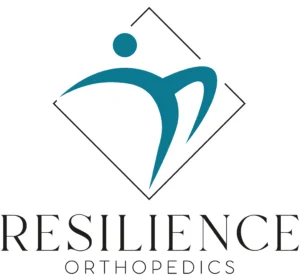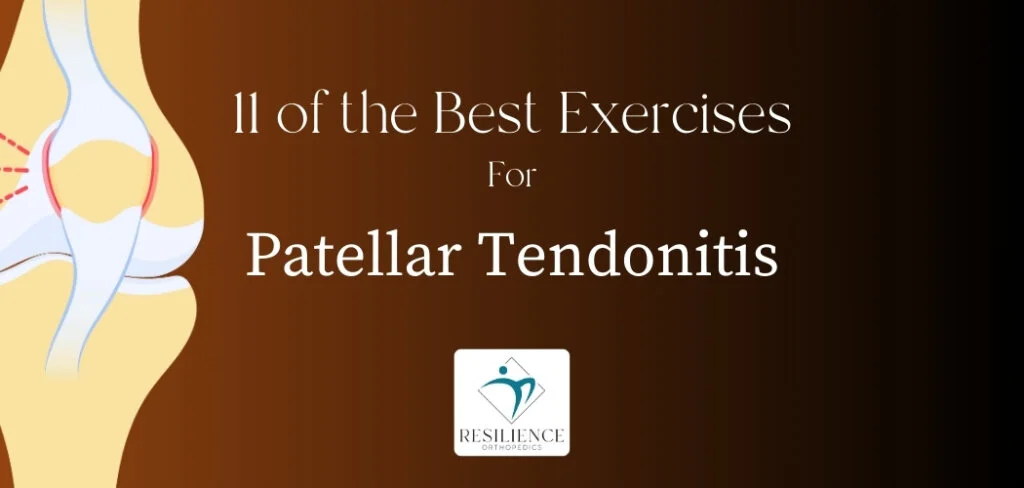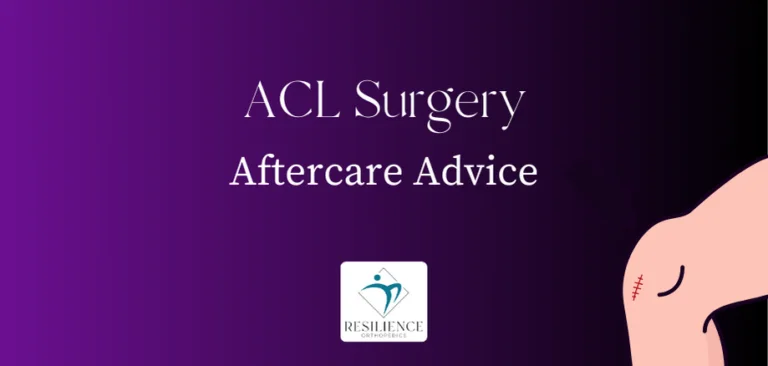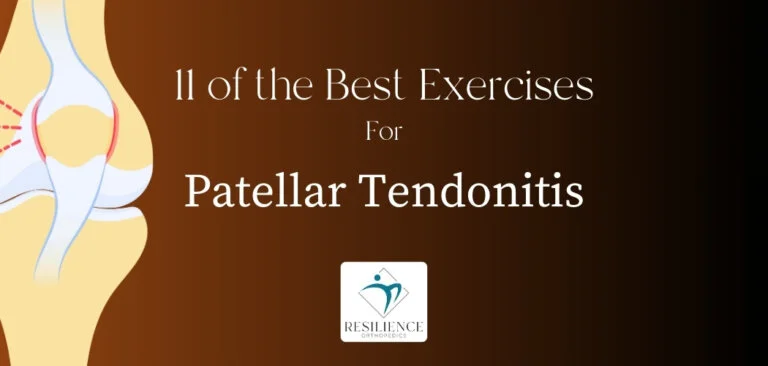Table of Contents
Here are some recommended exercises for patellar tendonitis rehab. It’s important to do this under the supervision of a physical therapist or orthopedic doctor.
This is especially true if you’ve had patellar tendon surgery. These activities will help to reduce your patellar tendon surgery recovery time.
These patellar tendonitis exercises will depend on how inflamed your tendon is. If any of these exercises cause knee pain or discomfort, stop and seek advice from your doctor.
Book a Consultation with Dr. Pamela Mehta, MD
The Best Orthopedic Surgeon in San Jose
Dr. Mehta is a board-certified orthopedic surgeon who can help you recover from your joint condition. If you:
- Are Suffering From Pain and Mobility Issues
- Need Orthopedic Assessment and Advice
- Want Treatment From a Top Orthopedic Doctor
We Can Help
Top 11 Patellar Tendonitis Exercises
1. Isometric quad contractions (Quad sets)
Isometric quad contractions involve tightening your quadriceps muscles without moving your leg. This exercise can help to maintain muscle strength and prevent atrophy while your patellar tendon is healing.
To perform this exercise:
- Sit or lie down with your leg straight out in front of you.
- Place a towel under your affected leg, and with the other leg place your foot on the ground with your knee at 90 degrees.
- Tighten your thigh muscles (quadriceps) by pressing the back of your knee down into the towel.
- Hold the contraction for 5-10 seconds and then relax.
- Repeat this exercise for several repetitions, up to 3 times per day.
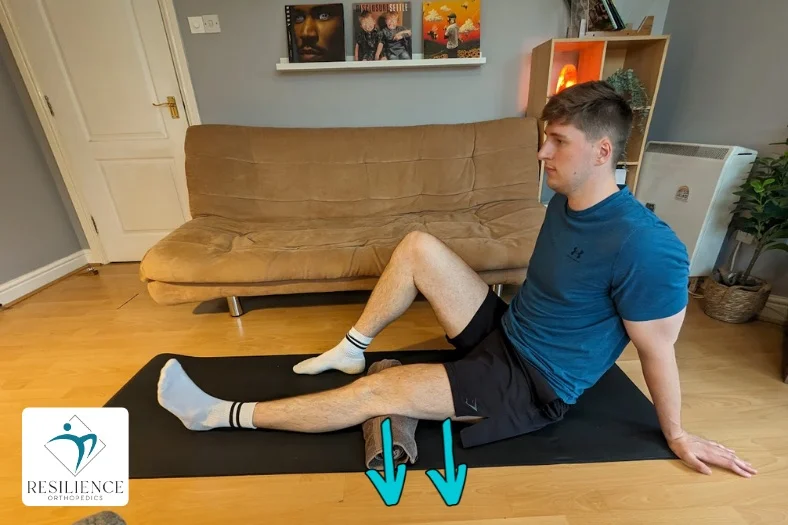
This exercise can be done shortly after surgery, and continued throughout the recovery process to maintain muscle strength and prevent atrophy.
2. Straight leg raises
Straight leg raises can help to improve quadriceps strength and range of motion.
To perform this exercise:
- Lie on your back with your affected leg straight out in front of you and the other leg bent at the knee (or lying flat if more comfortable).
- Tighten your thigh muscles and lift your affected leg up off the ground, keeping your knee straight.
- Hold the position for a few seconds and then slowly lower your leg back down.
- Repeat for several repetitions, up to 3 times per day.
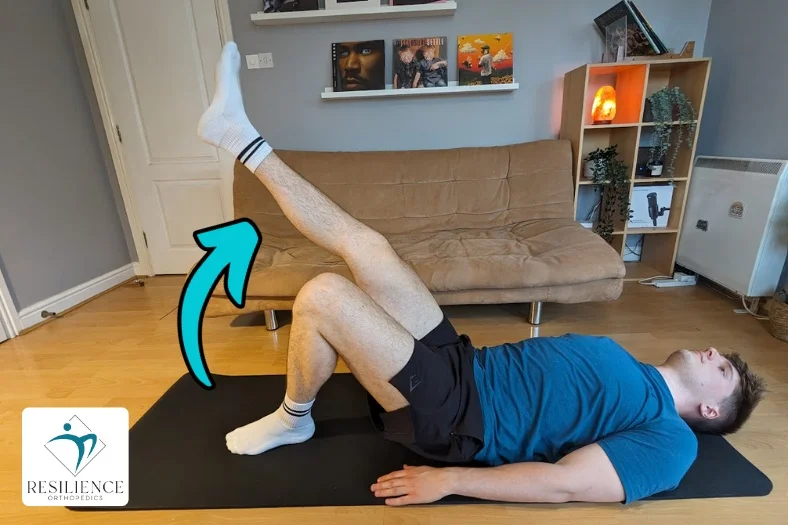
This exercise is usually started a few weeks after surgery, once pain and swelling have subsided. Start off with only gentle raises, progressing over time as you regain strength.
3. Wall sits
Wall sits can help to improve quadriceps strength and endurance.
To perform this exercise:
- Stand with your back against a wall and your feet shoulder-width apart.
- Slowly slide down the wall, bending your knees until they are at a 90-degree angle. Hold the position for a few seconds, and then slowly stand back up.
- Repeat for several repetitions, up to 3 times per day.
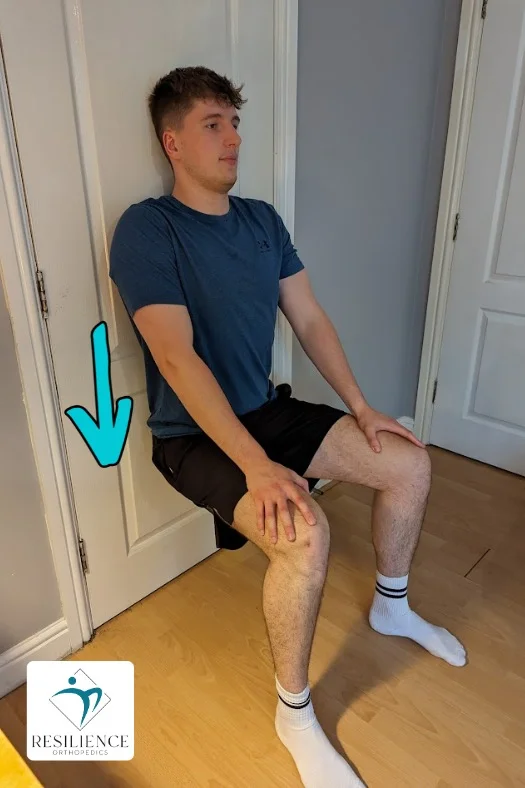
This exercise can be started a few weeks after surgery, once pain and swelling have subsided.
4. Terminal knee extensions
Terminal knee extensions can help to improve quadriceps strength and knee stability.
To perform this exercise:
- Tie a resistance band around a table leg or other object that will hold still.
- Put your knee inside so the loop goes around the back of your knee.
- Move back until the band is under tension with your knee slightly bent.
- Straighten your leg, which should pull the band back slightly.
- Hold for a few seconds, then bend your knee to release the tension
- Repeat 5-10 times, up to 3 times per day.
If you start finding this too easy, you can double up on the resistance band or find a stronger band.
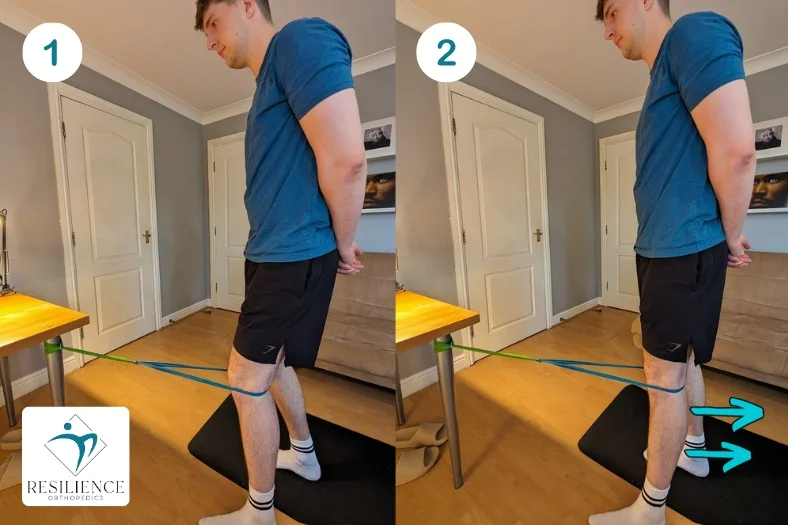
If you don’t have a resistance band, try it this way:
- Sit in a chair with your knees bent at 90 degrees and feet resting on the ground.
- With the affected leg, tighten your thigh muscles and lift your foot off the ground, straightening your leg as much as possible.
- Hold the position for a few seconds, then slowly lower your foot.
- Repeat for several repetitions, up to 3 times per day.
This exercise can be started a few weeks after surgery, once pain and swelling have subsided.
5. Hamstring curls
This exercise targets the hamstring muscles that help stabilize the knee joint.
- Lie on your stomach with straight legs and a resistance band looped around your ankles.
- Bend your knees and lift your heels towards your buttocks, hold for 5 seconds, then slowly lower your legs back to the starting position.
- Repeat for 10 to 15 repetitions.
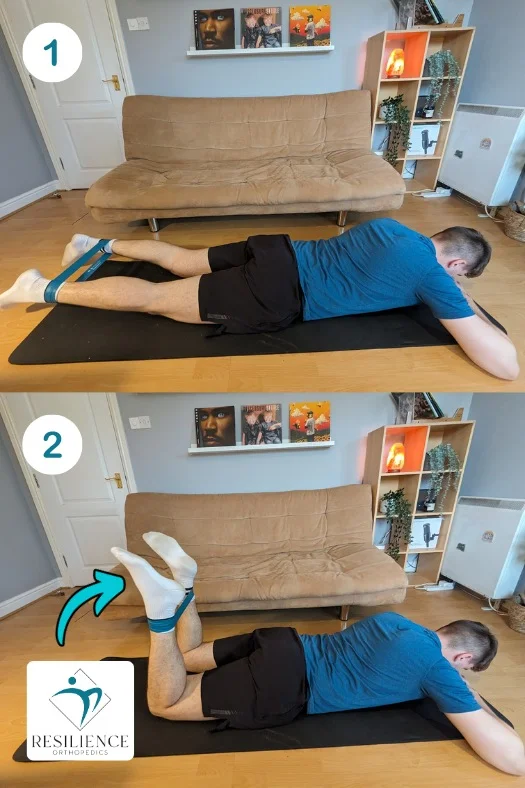
You can also do this using a gym cable machine, though you should start with very light weights that don’t cause pain.
It is best to do this exercise after the acute phase of the injury has subsided.
6. Clamshells
This exercise targets the hip abductor muscles that help support the knee.
- Lie on your side with your legs bent at a 90-degree angle and a resistance band looped around your knees.
- Keep your feet together and lift your top knee as high as you can without moving your pelvis, hold for 5 seconds, then slowly lower your knee back to the starting position.
- Repeat for 10 to 15 repetitions on each side.
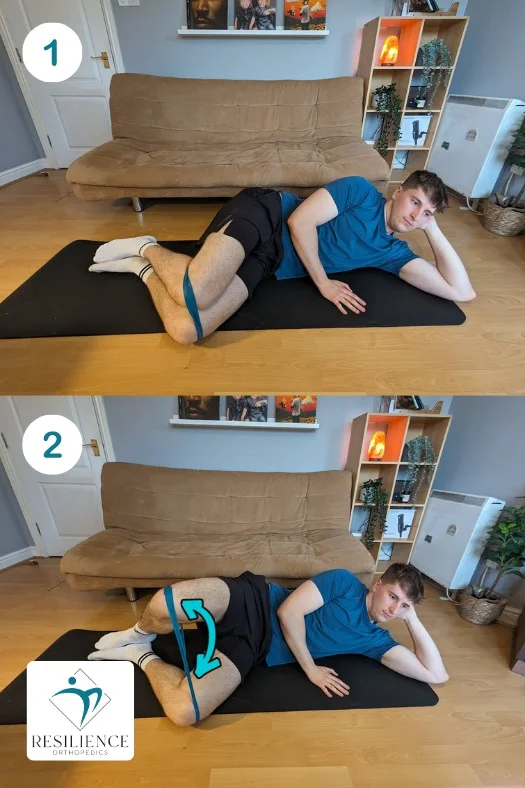
It’s best to do this exercise early in rehabilitation if you have avoided patellar tendon surgery.
7. Step-ups
This exercise targets the quadriceps muscles and helps improve balance and coordination – it’s a perfect patellar tendonitis exercise.
- Stand facing a step or stair with your injured leg on the step and your other foot on the floor.
- Step up onto the step with your injured leg, then step down with your other leg
- Repeat for 10 to 15 repetitions.
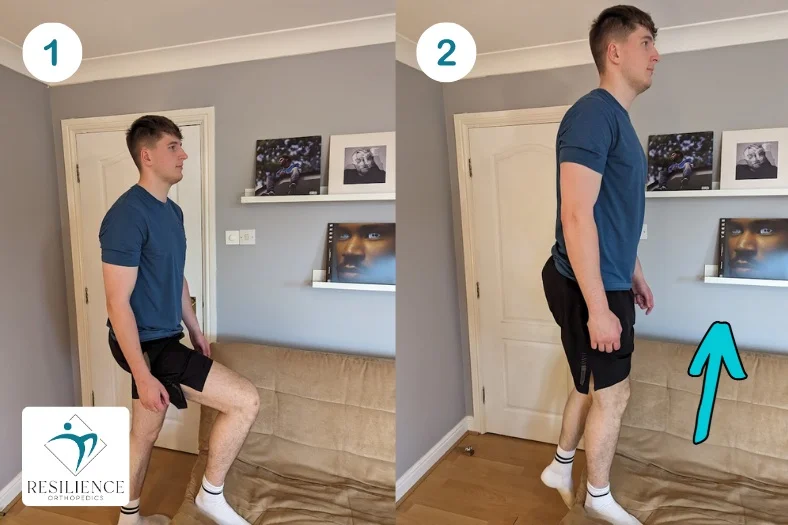
It would be best if you only considered doing this exercise once you have regained some strength in your injured leg.
8. Heel slides
Heel slides target the quadriceps muscles and help improve the knees range of motion.
- Lie on your back with straight legs and a towel or sliding disk under your heel.
- Slowly slide your heel towards your buttocks, bending your knee, then slowly slide your heel back to the starting position.
- Repeat for 10 to 15 repetitions.
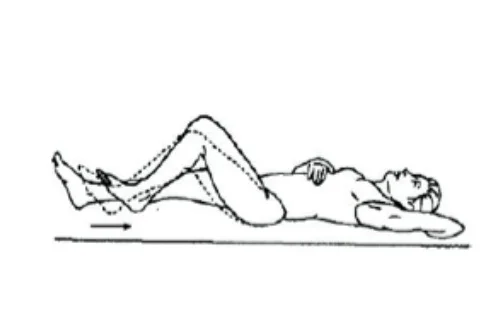
Consider this exercise in the early stages of rehabilitation.
Ready to Recover?
Take the first step in getting back to your normal self, and book an appointment with Dr. Mehta today.
We’re ready when you are!
9. Mini-squats
Mini-squats target the quadriceps muscles and help to improve knee stability.
- Stand with your feet shoulder-width apart and hold onto a stable surface for balance.
- Slowly bend your knees, keeping your weight over your heels
- Slowly straighten your legs back to the starting position.
- Repeat for 10 to 15 repetitions.
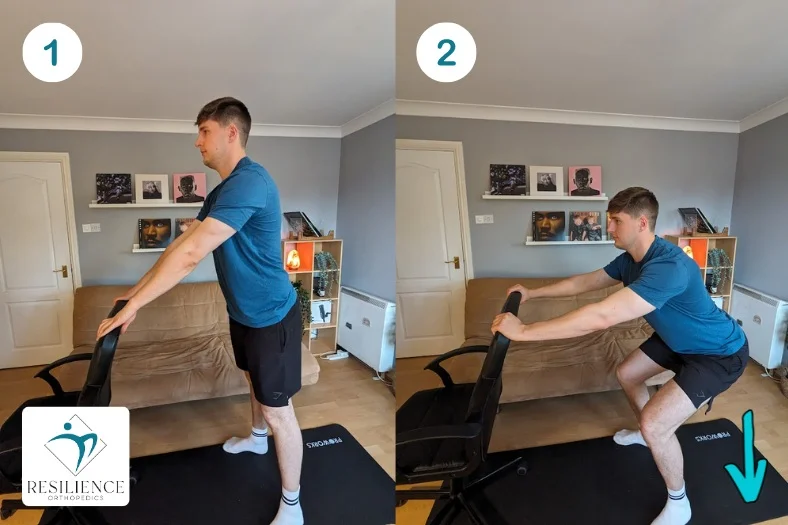
This exercise is best saved for when you have regained some strength in your injured leg, and should be viewed with caution if you have had recent patellar tendon surgery.
10. Straight leg raises with dorsiflexion
Targets the quadriceps and tibialis anterior muscles.
- Lie on your back with straight legs and a resistance band looped around your ankles.
- Point your toes towards your shin and lift your injured leg up towards the ceiling
- Hold for 5 seconds, then slowly lower your leg back to the starting position.
- Repeat for 10 to 15 repetitions.
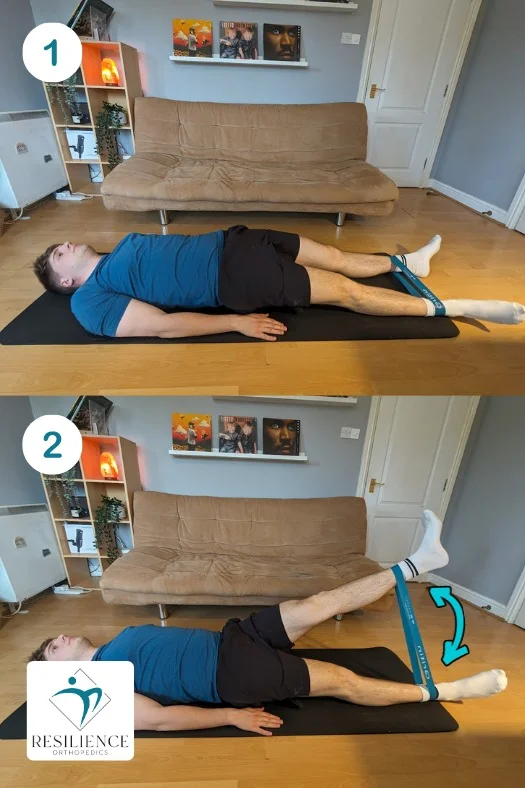
Best to do this exercise when you have regained some strength in your injured leg.
11. Stationary Cycling
This exercise targets the Quadriceps muscles.
- Sit on a stationary bike with the seat adjusted to a height that allows for slight knee flexion when pedaling.
- Begin pedaling at a slow pace and gradually increase your speed and resistance.
- Maintain a steady pace for 10 to 15 minutes.
- Gradually decrease your speed and resistance and then stop.
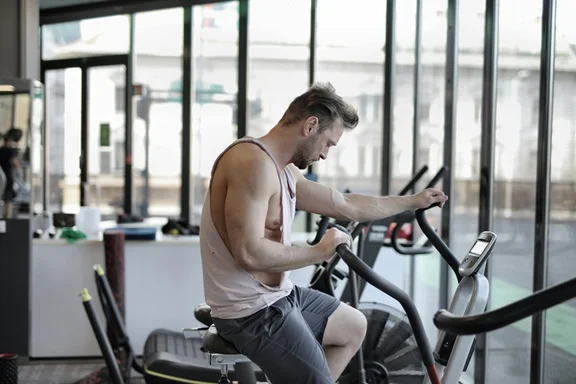
This exercise is best done during the later stages of recovery when your knee has regained some strength and mobility.
